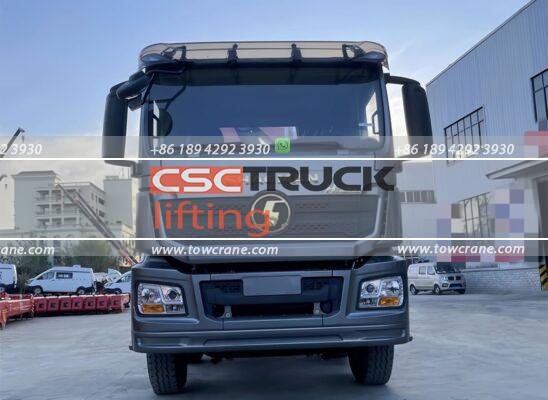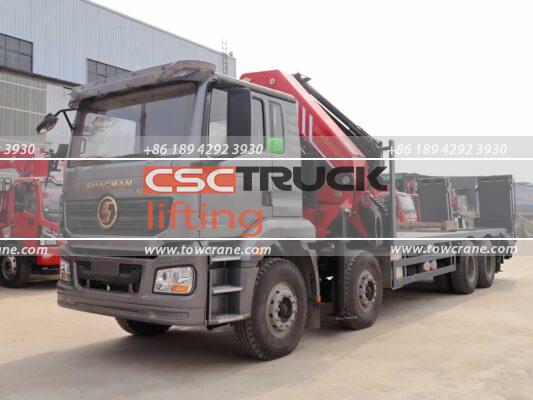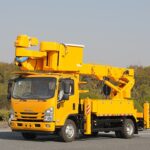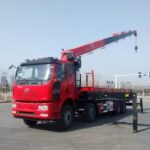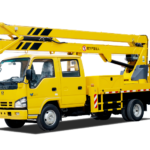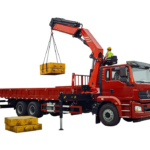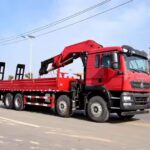In the daily maintenance of wreckers, it is crucial to regularly inspect all stressed components (such as the sub-frame, lifting arm, boom, wire rope, hooks, cylinder supports, boom seat, and towing forks) for any damage, deformation, cracks, or excessive wear. If any issues are found, they must be addressed promptly to prevent accidents during operation.
The main aspects of maintenance include:
- Always disengage the power take-off (PTO) when driving, and reduce speed when towing vehicles. The hydraulic oil must be sufficient, clean, of reliable quality, and replaced regularly. Mixing different types is not allowed.
- Frequently check the hydraulic system for leaks. If the hydraulic system needs to work for extended periods or in high-temperature environments, ensure that the hydraulic oil temperature does not exceed 60°C. Regularly inspect the tightness of all major bolts, especially the positioning bolts of the pins.
- The pressure difference between the hydraulic system and the rated pressure should be within ±10%. Deviations from this range can affect the normal operation of the hydraulic system.
- During winch operations, there should be no fewer than five turns of wire rope on the winch drum. The winch clutch control device must not be touched while the wire rope is under load.
Additionally, it is essential to monitor the condition of the brakes, steering system, and tires. Any signs of wear or malfunction in these components can compromise the safety and efficiency of the wrecker.
Brake System
Ensure the brake fluid is at the proper level and that there are no leaks in the brake lines. Inspect brake pads and discs for wear, and replace them if they are worn down. Test the brake performance regularly to make sure the wrecker can stop effectively, especially under heavy loads.
Steering System
The steering system should be checked for responsiveness and smooth operation. Look for any signs of wear or damage in the steering linkage, and ensure that the power steering fluid is topped up and free of contaminants. If the steering feels loose or unresponsive, investigate and resolve the issue immediately.
Tires
Regularly inspect the tires for adequate tread depth, proper inflation, and any signs of damage such as cuts or punctures. Uneven tire wear can indicate alignment issues that need to be addressed. Proper tire maintenance not only ensures safety but also contributes to better fuel efficiency and handling.
Electrical System
The electrical system, including all lights, signals, and warning indicators, must be in good working order. Check the battery terminals for corrosion and ensure the battery is securely mounted. Test the functionality of all lights and replace any bulbs or fuses as necessary.
Winch and Towing Equipment
The winch and towing equipment are critical for the wrecker’s operation. Inspect the winch cable for fraying or kinking, and replace it if any damage is found. Lubricate the winch and ensure it operates smoothly. The towing forks and attachments should be checked for structural integrity and proper function.
Regular Lubrication
All moving parts, including hinges, joints, and bearings, should be lubricated regularly to minimize wear and tear. Use the recommended type of lubricant for each component, and avoid over-lubrication as it can attract dirt and cause additional wear.
Documentation and Training
Maintain detailed records of all maintenance activities, including dates, performed tasks, and any parts replaced. This documentation is invaluable for tracking the condition of the wrecker and planning future maintenance. Ensure that all operators and maintenance personnel are properly trained in both the operation and upkeep of the wrecker.
By adhering to these maintenance practices, the longevity and reliability of large road wreckers can be significantly enhanced, reducing downtime and improving safety for both operators and other road users. Regular maintenance not only extends the life of the equipment but also ensures that it operates at peak performance, ready to handle the demanding tasks it is designed for.


